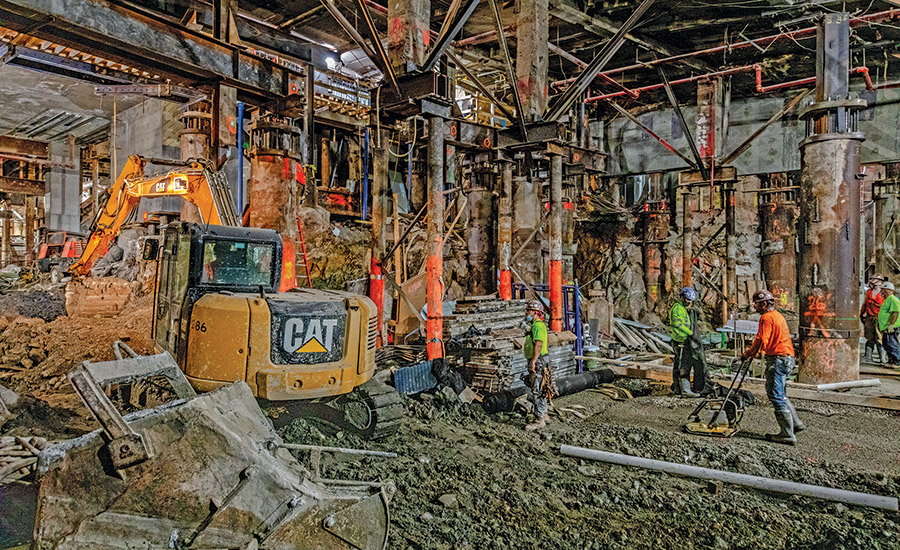Related Article:
TSX Broadway Joins Old to New in Times Square
Back to:
25 Top Newsmakers
When the project team for TSX Broadway—a partial demolition and significant renovation and rebuild of a theater district tower in New York City—wanted to perform a truly challenging feat of engineering, it called in Tony Mazzo at Urban Foundation/Engineering. Project developer L&L Holding Company had a vision for the 110-year-old landmark Palace Theater that required it to be elevated 30 ft within the renovated tower’s footprint to create space for new street-level retail. This kind of maneuver had never been done before with a historic building in the city, but Mazzo had successfully moved another historic Broadway venue, the Empire Theater, about 80 ft horizontally down the street back in 1998. Close enough.
Raising the 14-million-lb Palace Theater still took careful planning. The project also involves the partial demolition and rebuilding of the 45-story tower that straddles the theater as well as excavation of a new subbasement below it. Faced with limited site access and working while the building above was being demolished and rebuilt, Mazzo had to figure out how not only to excavate beneath the theater, but also to drill the foundation piles that would bear the hydraulic jacks to lift it up all in one piece.
“This had never been done before,” says Mazzo. “Myself and my team, we had to come up with a way to stabilize the theater, cut it away from its foundation, lift it off the floor uniformly, then guide it through a system that guarantees its vertical lift and maintains vertical alignment.” No small task. Working alongside Urban vice presidents Adam Wall and Richard Falcone, Mazzo devised a lift system of hydraulic jacks on core beams inside caissons drilled into bedrock.
It was a brainstorm that paid off. “It finally occurred to me that the caisson configuration we install for the new building is an ideal prototype for the mechanism we need to lift the theater,” he says. “If I could figure out a way for the I-beam in those holes to emerge out of it, and be able to jack up and out to a height of 30 ft, I’ve essentially invented a 30-ft hydraulic jack.”

Tony Mazzo
Photo courtesy of Tony Mazzo
The innovation allowed Mazzo to use standard 600-ton-capacity hydraulic jacks that could be reset each time their 6-in. cylinders were extended. All of the 34 “lifting posts” were controlled by a single hydraulic manifold that kept them in sync. When it was time to perform a lift, crews only had to adjust the nuts on a set of threaded rods and plates—devised by Mazzo—that kept the load on the beam while jacks were reset for the next lift cycle. “We were lifting up [each] core beam by its boot straps, always maintaining it in place by running down the hex nuts on threaded rods,” he says.
Every 25-minute lift cycle raised the theater 5 in., and it took about 35 minutes to adjust all the equipment and reset for the next lift. According to Mazzo, it worked out to about 2.5 ft a day, or about 15 days of lifting to move the Palace Theater to its new home 30 ft up. A reinforced concrete ring beam around the perimeter of the theater’s floor with steel girders acted as a diaphragm to keep it stable.
“I can clearly tell you that this project—and I’ve been in this business for 30 years—was the most complicated and complex I’ve ever been involved in. I don’t think I’ll even be on something as complex as this again,” says Robert Israel, L&L Holding Company executive vice president. With the excavation, demolition, rebuilding and theater lift all happening in parallel, it was a highly unusual project, he says. “It would be tough to find another one more complicated.”




Post a comment to this article
Report Abusive Comment